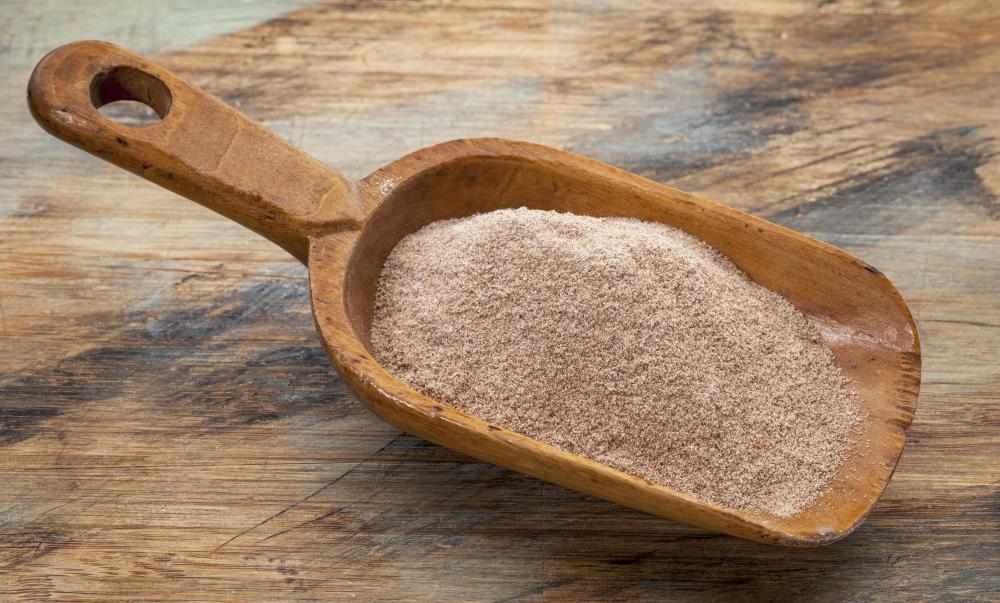At DelightedCooking, we're committed to delivering accurate, trustworthy information. Our expert-authored content is rigorously fact-checked and sourced from credible authorities. Discover how we uphold the highest standards in providing you with reliable knowledge.
What Is Gluten-Free Licorice?
Licorice — sometimes spelled liquorice — usually refers to a chewy candy produced in the form of ropes, although it can in fact refer to any candy flavored with licorice extract as well as some candies with a similar shape. Gluten-free licorice refers to any of these candies made without products containing gluten, and made in a facility where cross contamination with gluten is not possible. It is common for manufacturers to use flour as a binder in chewy licorice, but gluten-free products often use corn or tapioca starch instead.
Traditional licorice, sometimes called "black licorice," is made with an extract from the Glycyrrhiza glabra plant, which is a legume, like a bean. Licorice extract itself is inherently gluten free, so it's safe to add to any gluten-free candy. In some parts of the world, like the US, the term licorice can also refer to strawberry or cherry flavored red candies that resemble the traditional licorice tubes or ropes; although it doesn't have the same flavor, the process for making red gluten-free licorice is basically the same as it is for black licorice.

The protein gluten is a sticky substance found in wheat, rye and barley. The most common reason one would avoid it is because of a sensitivity or Celiac disease, a disorder that inhibits the digestive system from breaking down gluten. When someone with Celiac disease or a sensitivity to the protein consumes it, he or she can suffer from serious digestive problems. Some people without a sensitivity to gluten still choose to follow a gluten-free diet for health benefits. Those who do generally believe it aids in weight loss and overall health, although there is a limited amount of scientific data that backs up the claim.

The use of flour as a binder in licorice is common. In order for gluten-free licorice to achieve the consistency of traditional licorice, candy makers use other binders, such as molasses, corn starch or tapioca starch. They may also us a gluten-free flour, such as rice flour or soy flour, in place of wheat flour. Hard candies flavored with licorice are less likely to contain gluten than soft, chewy candies.

The basic ingredient to look for when determining if a particular candy qualifies as gluten-free licorice is flour. There are, however, other ingredients that would indicate the product is not gluten free. Barley malt, for example, is sometimes used as a sweetener, and contains gluten.
There's also the issue of cross contamination, regardless of the ingredients. Foods processed in shared facilities may be open to contamination from small amounts of gluten. In the US, the Food and Drug Administration allows products to be labeled "gluten free" if the gluten content is less than 20 parts per million (PPM). Other countries, such as Canada, have the same PPM requirement but have additional regulations involving the labeling of gluten-free food.
AS FEATURED ON:
AS FEATURED ON:














Discussion Comments
@fify-- Rice flour and rice starch are also used to make gluten free licorice. Those are good too, there really isn't any difference from licorice made with wheat. All of these ingredients serve to thicken the texture of the candy.
I don't like licorice but I do eat strawberry and apple flavored gluten free twist candies which are usually labeled as "licorice." The sour apple flavor is delicious. Aside from gluten, I also check these candies to see what type of sugar has been used. Many brands now use corn syrup which I'm not fond of.
@stoneMason-- The gluten free licorice candies I snack on are delicious. They're just as good as the ones containing gluten, in fact even better. Look for a brand that uses natural ingredients and real licorice extract and you won't be disappointed.
The type I buy is made with tapioca starch and is free of gluten and wheat. It's also vegan. I think some gluten free licorice is made with soy flour instead of tapioca. I know that some people who have issues with gluten also have issues with soy. So make sure the read the ingredients list carefully before buying.
Do gluten free licorice candies taste just as good as the regular ones? I was recently diagnosed with a gluten sensitivity and won't be able to enjoy regular licorice candies any longer.
Post your comments